Is Lower Back Pain Worse After Chiropractic Adjustment
Have you ever wondered if getting a chiropractic adjustment can make your lower back pain worse? Well, you're not alone. Many people have this concern, and it's totally understandable.
After all, when you're already dealing with nagging back pain, the last thing you want is for it to get even worse. But let me tell you, as someone who has personally experienced the benefits of chiropractic care, I can assure you that it's not always the case. In fact, chiropractors play a crucial role in relieving lower back pain and promoting overall wellness. They use their expertise to manipulate your spine and restore its proper alignment, which can alleviate discomfort and help your body heal naturally.
So in this article, we'll delve into the topic of is lower back pain worse after chiropractic adjustment. We'll explore how chiropractors tackle issues like disc herniation and how spine alignment plays a vital role in reducing pain.
Plus, we'll discuss the benefits of chiropractic care beyond just treating existing pain – because let's face it, maintaining our overall health is key to living an innovative and fulfilling life.
So stay tuned for some valuable insights on this intriguing topic!
Is Lower Back Pain Worse After Chiropractic Adjustment
Have you ever felt relief after a chiropractic adjustment only for your lower back pain to return like a wave? I understand the feeling. When you're seeking chiropractic care for chronic back pain, it can be frustrating and discouraging. Don't give up! Chiropractic adjustments may worsen lower back pain for several reasons.
Start by understanding that chiropractic adjustments realign and improve spine function. Some may feel immediate relief, but others may experience temporary discomfort or soreness as their body adjusts. This is normal and should go away in a day or two. Consider it an 'adjustment period' before your body fully benefits from the treatment.
Second, spine misalignments masked by underlying issues can worsen lower back pain, even after a chiropractic adjustment. Chiropractors correct these misalignments but sometimes find other issues. While the adjustment may seem worse, it's actually highlighting areas that need more treatment.
Thirdly, chiropractic adjustments affect people differently. Lower back pain relief may occur immediately in some people. Others may need multiple sessions or different methods for the best results. Tell your chiropractor about any changes or concerns so they can adjust their approach.
Chiropractic adjustments can worsen lower back pain, which can be discouraging, but there are reasons. It could be part of the natural healing process as your body adjusts to spine realignment or a sign of deeper issues. Remember that chiropractic care affects everyone differently, so it may take time to find the right approach. Don't quit yet!
Chiropractor's Role
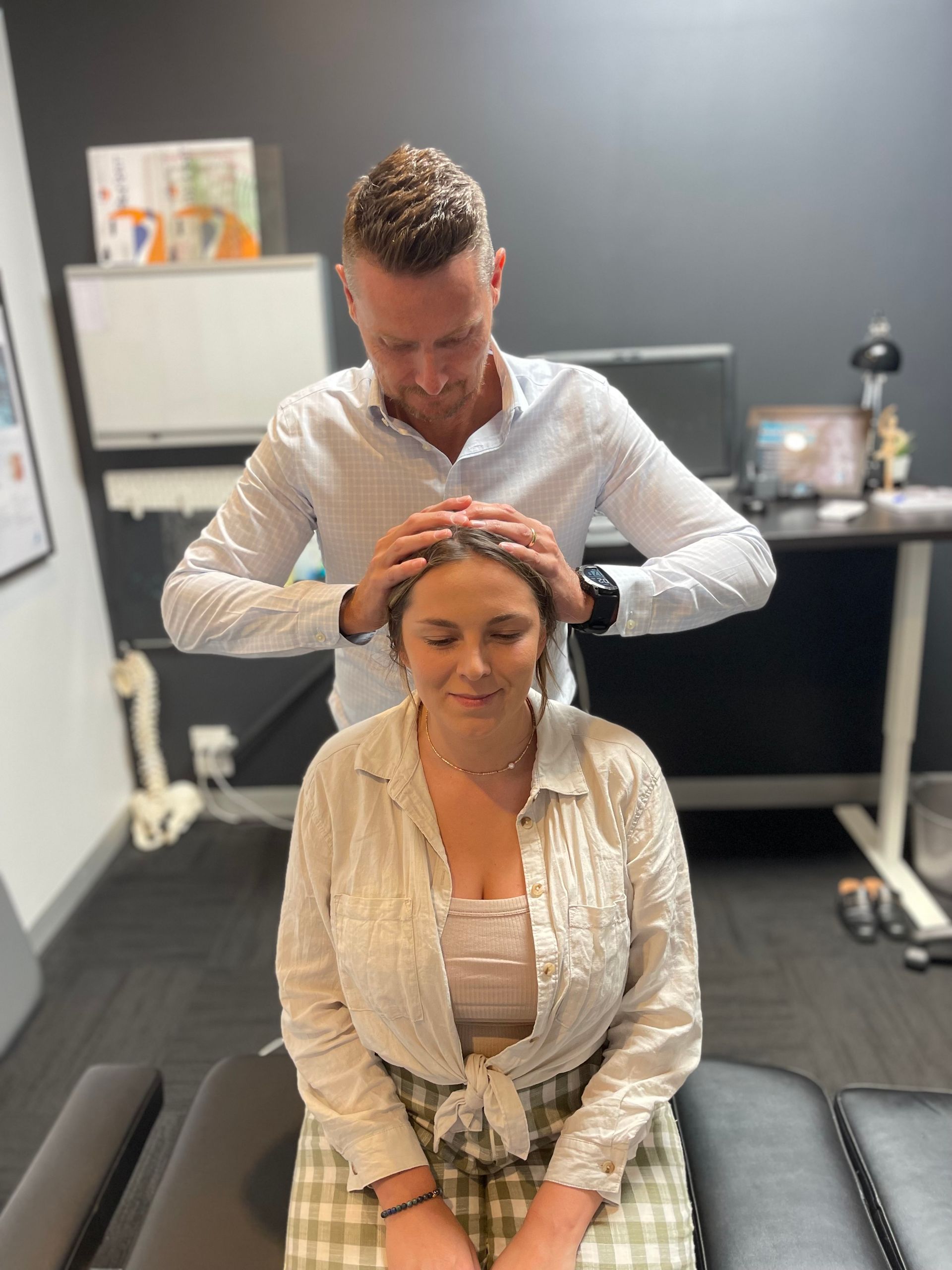
The chiropractor is vital to your health. Chiropractors diagnose and treat lower back pain. Spinal realignment and joint function can relieve pain with chiropractic adjustments. Adjustments may cause temporary discomfort or soreness in some people.
Chiropractic treatments include spinal manipulation, mobilization, and soft tissue therapy. They reduce pain and inflammation and improve range of motion. Chiropractors correct spine misalignments to restore musculoskeletal function.
While adjustments can worsen lower back pain, this is rare. When the body adjusts, the discomfort usually goes away within a few days. Please inform your chiropractor of any concerns or increased pain so they can adjust their treatment.
Chiropractors treat lower back pain by using adjustments and other methods. They treat the root causes of pain and promote healing. Treatment-induced discomfort is usually temporary and part of the body's natural adjustment process.
Disc Herniation And Chiropractic Care
Chiropractic care relieves disc herniation pain. Chiropractic adjustment reduces lower back pain and improves spinal health by treating disc herniation, according to research. Here are three ways chiropractic care can relieve disc herniation symptoms:
- Spinal Manipulation: Chiropractors use precise and targeted adjustments to realign the spine and reduce pressure on the affected discs. This gentle manipulation helps improve mobility, decrease inflammation, and relieve pain in the lower back.
- Rehabilitation Exercises: In addition to spinal manipulation, chiropractors may recommend specific exercises to strengthen the muscles that support the spine. These exercises can help improve posture, increase flexibility, and reduce the risk of further injury.
- Lifestyle Modifications: Chiropractors take a holistic approach to healthcare and often provide guidance on lifestyle modifications that can support healing and prevent future episodes of disc herniation. This may include recommendations for proper ergonomics at work or home, maintaining a healthy weight, and incorporating regular exercise into your routine.
Alternative disc herniation treatments include chiropractic care, which is non-invasive and drug-free. Chiropractic treatments aim to restore spine function and relieve lower back pain by addressing both symptoms and causes. If you have disc herniation pain, try chiropractic care.
Spinal Alignment
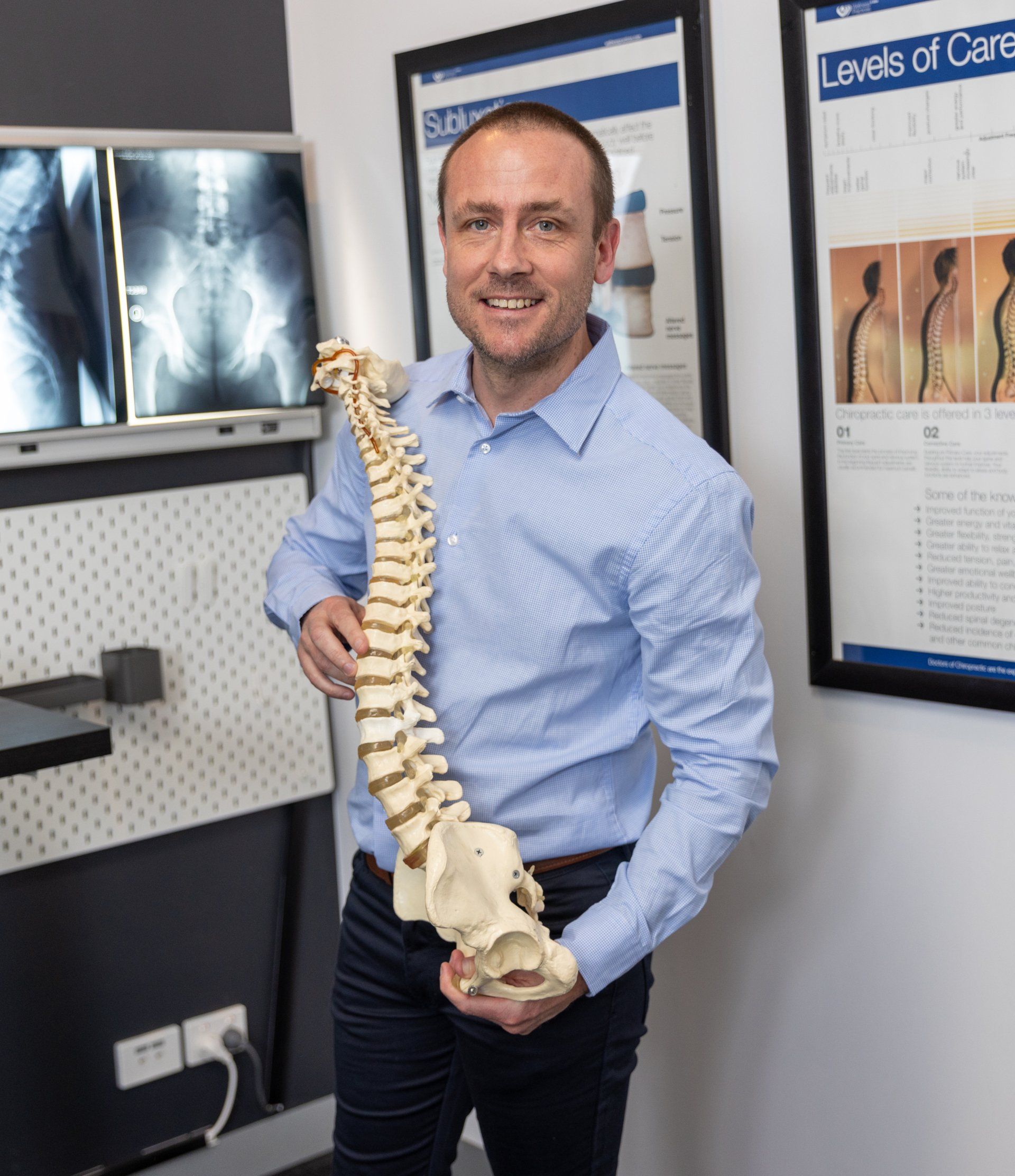
Understanding spine alignment can improve spinal health and relieve pain.
Many people wonder if chiropractic adjustments worsen lower back pain. Chiropractic treatments can relieve lower back pain and improve spine alignment when done properly.
Spine alignment is essential for back health. Spinal misalignment can cause muscle tension, nerve impingement, and disc herniation. Restoring spine curvature is the goal of chiropractic adjustments. Thus, chiropractic adjustments reduce nerve pressure, relax muscles, and improve spinal health.
Despite popular belief, chiropractic adjustments do not worsen lower back pain. Chronic pain sufferers can find significant relief from them. Some people may experience mild soreness or stiffness after an adjustment due to their body adjusting to treatment changes, but this should subside within a day or two.
Chiropractic care can reduce lower back pain and improve quality of life by correcting spine misalignments. Chiropractic doctors understand how body parts interact with and affect each other. Manual manipulations like spinal adjustments and mobilisations restore spine alignment.
When seeking chiropractic lower back pain relief, proper spine alignment is crucial. Realigning your spine with chiropractic adjustments can reduce pain and improve spinal health.
Benefits Of Chiropractic Care
Prepare to discover chiropractic's amazing benefits! Chiropractors are spine alignment experts. They use spinal adjustments and other methods to relieve pain and improve health.
Chiropractic treatment for low back pain is a major benefit. Chiropractic adjustments often relieve lower back pain and improve mobility, contrary to popular belief.
Chiropractors know spine alignment is essential for health. Spinal misalignment causes lower back pain and other issues. Chiropractors realign spines and relieve nerve pressure with gentle adjustments. This reduces lower back inflammation and promotes healing.
Studies have shown that chiropractic treatment relieves low back pain more effectively than other therapies. Chiropractic adjustments improved symptoms more than other therapies in studies. Chiropractors encourage natural healing and balance in their holistic approach to healthcare.
Chiropractic care has many benefits beyond lower back pain. It boosts immunity, flexibility, range of motion, athletic performance, and sleep quality. Chiropractic care also teaches posture correction and lifestyle changes to prevent injuries.
Now that you know chiropractic care helps with low back pain, you should know when to visit one. If you have chronic or severe lower back pain that affects your daily life or quality of life, you should see a chiropractor.
When To Visit A Chiropractor
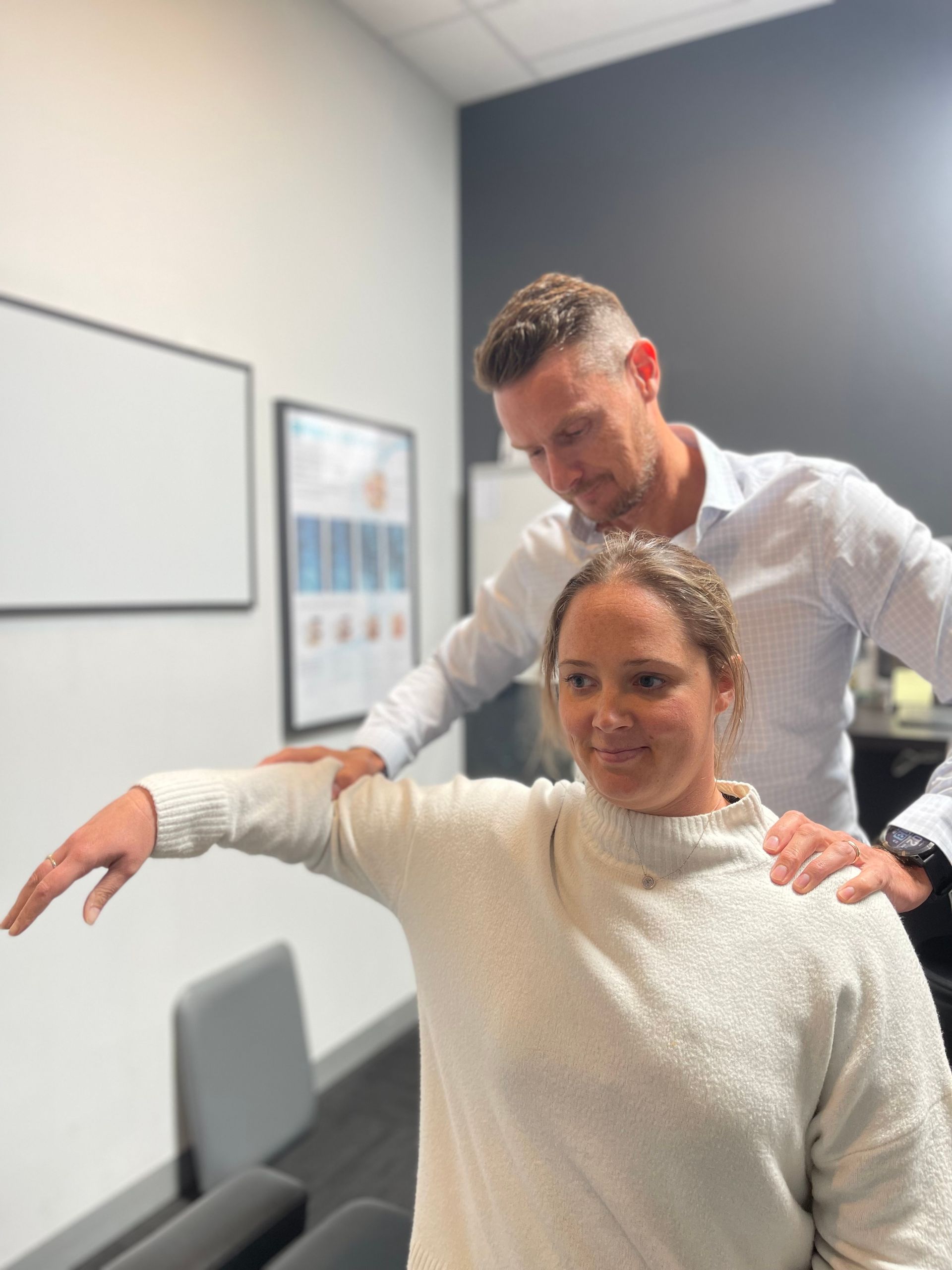
Let's discuss when to see a chiropractor after discussing its benefits.
As someone with lower back pain, I understand the need for relief and innovation in treatment options. Chiropractic treatment can benefit many people, but in some cases, it may be more effective than others.
First, if your lower back pain hasn't improved with rest or over-the-counter pain medication, you may want to see a chiropractor. Chiropractors assess the spine and use manual adjustments or other techniques to relieve pain and improve function.
Second, if you've recently been in an accident or injured your lower back, you should see a chiropractor. Falls and car accidents can cause spine misalignments, which can cause pain and limited movement. A skilled chiropractor can evaluate your condition and provide targeted treatment. To provide a visual representation of these ideas:
- When to Visit a Chiropractor:
- Lower back pain not improving with self-care measures.
- Recent accidents or injuries causing lower back pain.
If you're having lower back pain or have been in an accident that caused it, a chiropractor can help identify the cause and create a customized treatment plan. By addressing misalignments or other underlying issues, chiropractic adjustments may help.
Understanding Back Pain
After discussing when to see a chiropractor, let's discuss back pain. Is lower back pain worse after chiropractic adjustment?
Back pain affects millions of people worldwide, ranging from a dull ache to sharp, shooting pain, and often caused by poor posture, muscle strain, or spinal misalignment. To relieve lower back pain after a chiropractic adjustment, you must determine the cause.
Chiropractic adjustments relieve pain and improve function by manually manipulating the spine and other body parts. While these treatments are safe and effective, some people may experience mild, short-lived soreness after their sessions due to muscle and tissue tension release.
Chiropractic treatment for back pain may relieve some people immediately or leave them with minimal soreness, depending on their sensitivity, the severity of the misalignment, or the injury being treated.
Understanding why lower back pain can worsen after a chiropractic adjustment helps manage treatment expectations. Although temporary soreness is possible, many patients find long-term pain relief and mobility with regular visits to a skilled back pain chiropractor.
Chiropractic Adjustment Benefits
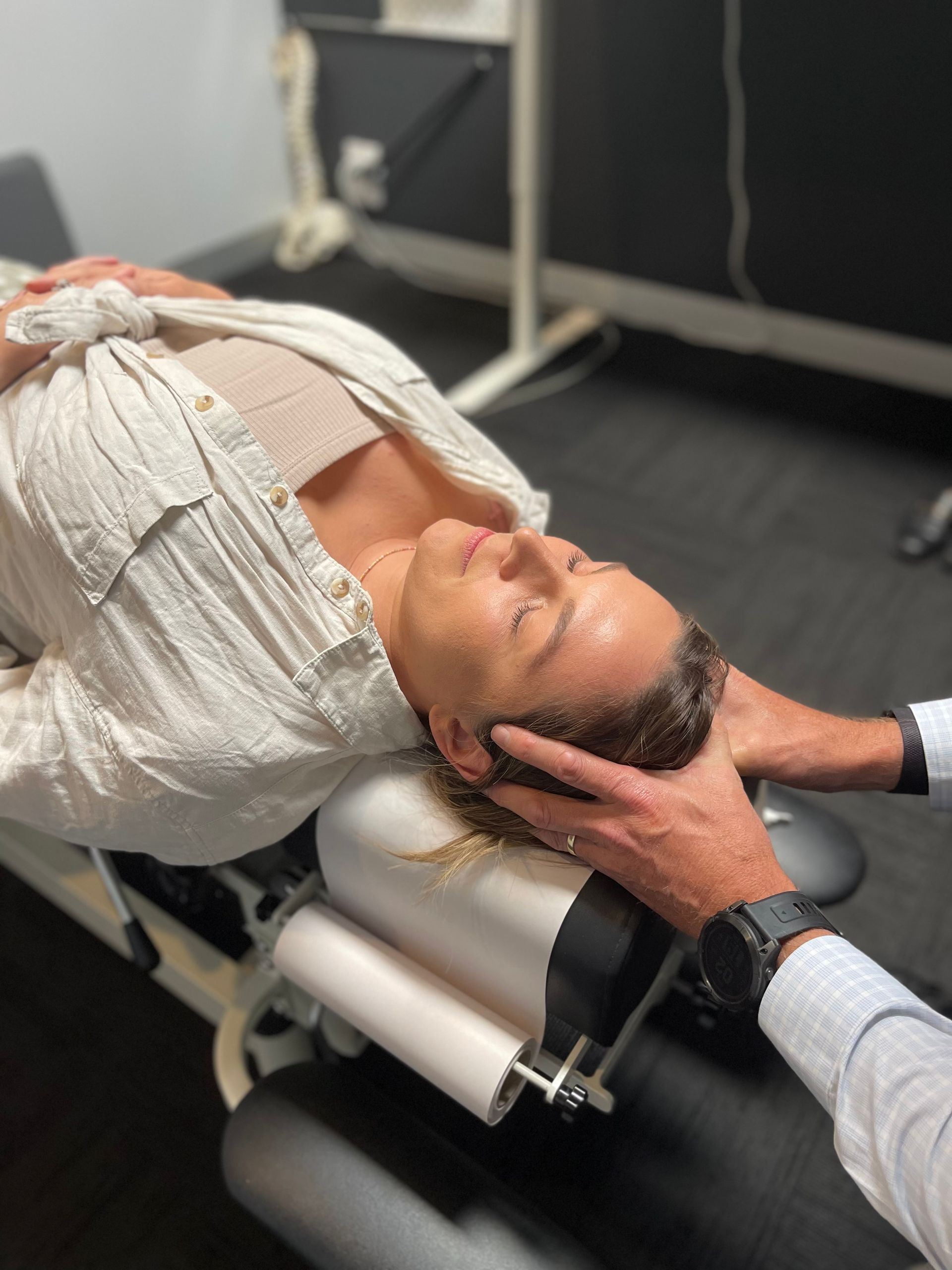
Chiropractic adjustments can improve mobility and reduce back pain, according to research. Here are three ways they can help:
- Increased flexibility: Chiropractors use various techniques to manipulate the spine and joints, helping to restore proper alignment and range of motion. By loosening tight muscles and reducing inflammation, chiropractic adjustments can enhance flexibility in the lower back area.
- Pain relief: Lower back pain can be debilitating and impact daily activities. Chiropractic adjustments target the root cause of the pain by realigning the spine, relieving pressure on nerves, and reducing muscle tension. This can lead to a significant reduction in lower back pain and an improvement in overall comfort.
- Improved posture: Poor posture is a common contributor to lower back pain. Chiropractors not only focus on alleviating immediate discomfort but also address underlying postural issues. Through targeted adjustments and exercises, they help patients achieve better spinal alignment, leading to improved posture over time.
Chiropractic adjustment benefits go beyond lower back pain. While these treatments have helped many people with lower back pain, they may worsen symptoms in some cases. Understanding potential side effects will help you decide if chiropractic care is right for you.
Potential Side Effects
Chiropractic adjustments manipulate the spine and muscles, which can cause soreness and worsen lower back pain.
The discomfort during a chiropractic adjustment is usually temporary and nothing to worry about. Your chiropractor will use their hands or a specialized tool to apply controlled force to specific areas of your spine to realign the vertebrae and improve spinal function. However, some patients may experience an increase in lower back pain after the adjustment due to slight vertebral movement.
Using ice or heat packs, over-the-counter pain relievers, and gentle stretching can help relieve pain after a chiropractic adjustment. It usually goes away within a day or two.
This temporary increase in lower back pain does not mean the chiropractic adjustment was ineffective or harmful. It often indicates that your body is responding to the treatment and beginning its natural healing process. Do not be discouraged if you experience more discomfort; it is simply a step towards feeling better.
Muscle Soreness After Adjustment
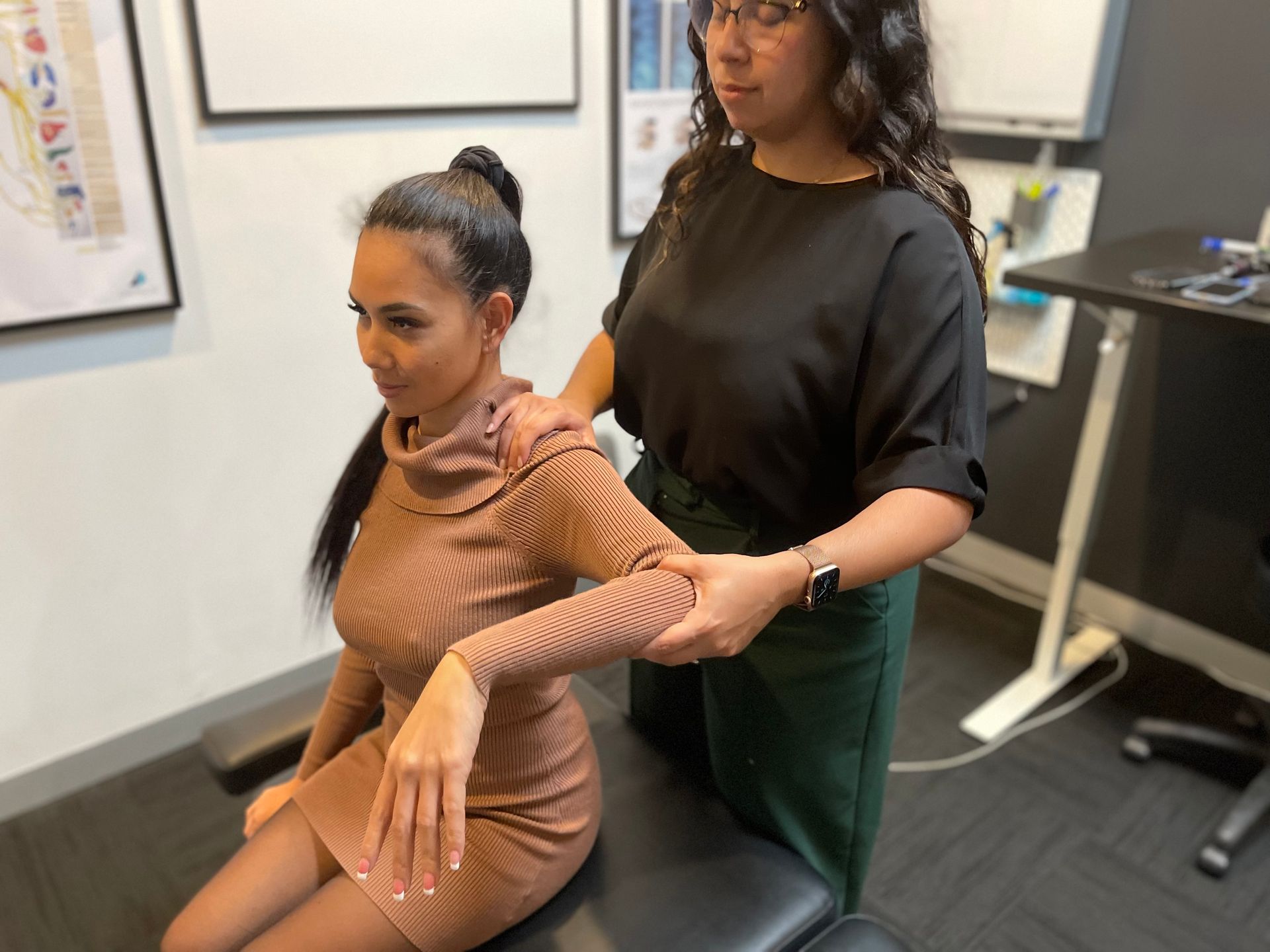
After a chiropractic adjustment, your muscles may feel sore, which is normal and may indicate that your body is healing. Here are some reasons why:
- Realignment of the spine: During a chiropractic adjustment, the chiropractor manipulates your spine to correct misalignments. This realignment can put stress on muscles and soft tissues that have become accustomed to compensating for the misalignment. As these muscles adjust to the new alignment, they may feel sore or tender.
- Release of tension: Chiropractic adjustments aim to release tension and restore proper function to your joints and muscles. However, this release of tension can sometimes cause temporary discomfort as your body adapts to its new state. Think of it as loosening up tight knots in a rope – there might be some residual tenderness afterward.
- Increased blood flow: Chiropractic adjustments promote blood circulation, which helps deliver nutrients and oxygen to damaged tissues for healing. The increased blood flow can also lead to temporary muscle soreness as more nutrients are brought into the area.
A chiropractic adjustment may cause muscle soreness, but if you're worried about its intensity or duration, talk to your back pain chiropractor for advice. Everyone's body reacts differently, so patient experiences vary.
Patient Experiences
I've shared my transformative experience with chiropractic adjustments. Some patients may wonder if their lower back pain gets worse after a chiropractic adjustment. While the back may feel sore initially, this is usually temporary and part of the healing process. I could feel my vertebrae slightly moving as my back pain chiropractor realigned them. This gentle manipulation restores proper spine function and alignment, reducing tension and promoting healing. After chiropractic treatment, the muscles around the spine often become sore or tender.
In my case and many others', these soreness symptoms gradually improve within a few days or even hours after the adjustment. The body's natural healing mechanisms relieve any discomfort from realigning the spine. It's important to discuss any concerns or unusual sensations with your chiropractor so they can address them.
Chiropractic care addresses the root causes of pain rather than just masking symptoms with medication. By restoring proper spine alignment and function, patients often find long-term pain relief and improved health.
Maintaining Overall Health
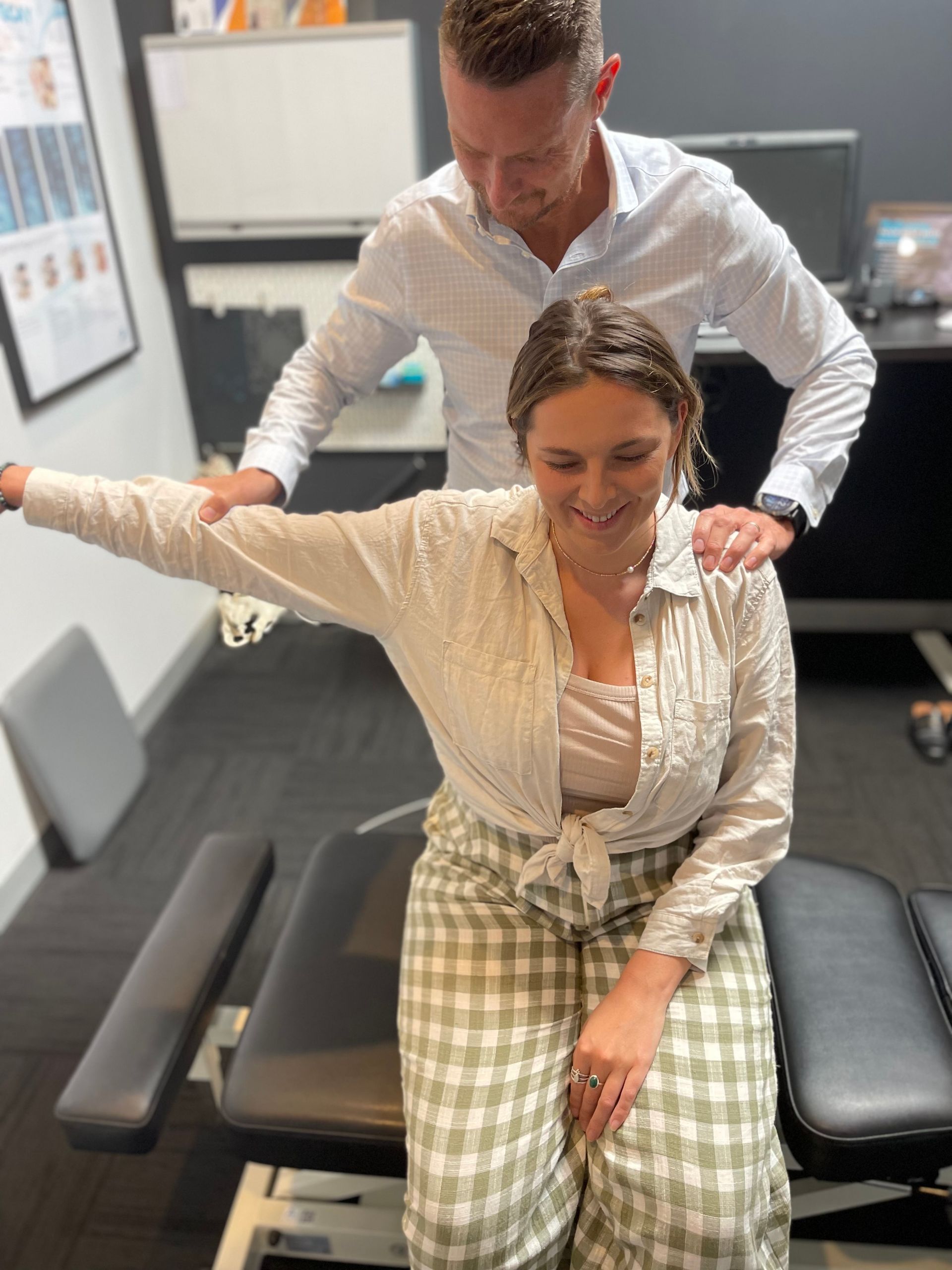
Visits to your chiropractor can help you live a healthier, pain-free life, but some people experience temporary discomfort after a chiropractic adjustment, especially for lower back pain.
After receiving adjustments from your back pain chiropractor, your lower back pain may initially feel worse. The chiropractor moves the vertebrae in your spine slightly, which can cause the surrounding muscles and tissues to become sore or irritated. As your body adjusts to the movement, it should feel better.
If you feel sore or uncomfortable after an adjustment, ice or heat therapy can reduce inflammation and provide relief. Your chiropractor may also recommend gentle stretching exercises.
If you're worried about how you feel after a chiropractic adjustment, don't worry. The soreness or discomfort should go away within a few days as your body adapts and heals. If you have any questions or concerns, talk to your chiropractor.
Common Questions About Chiropractic Care
So, we've discussed the importance of overall health and how chiropractic care can help. Let's now discuss some common chiropractic care questions. People often ask, 'Is lower back pain worse after a chiropractic adjustment?'
I understand why someone might ask that question—having your spine manipulated may sound scary or painful. However, everyone's chiropractic adjustment experience is different.
An adjustment may relieve lower back pain immediately, but some people may feel mild soreness or discomfort for a short time.
Three things to remember during and after a chiropractic adjustment for lower back pain are:
- Personalized approach: Chiropractors take an individualized approach to each patient's needs and concerns. They will assess your condition and create a treatment plan tailored specifically to you.
- Adjustment techniques: Chiropractors use various techniques when performing adjustments. These techniques aim to restore proper alignment and function to your spine while minimizing discomfort.
- Post-adjustment care: Following an adjustment, your chiropractor may recommend certain exercises or stretches to help support the healing process and maintain spinal alignment.
If you're worried about your lower back pain worsening after a chiropractic adjustment, talk to your chiropractor.
Chiropractic Treatment Options
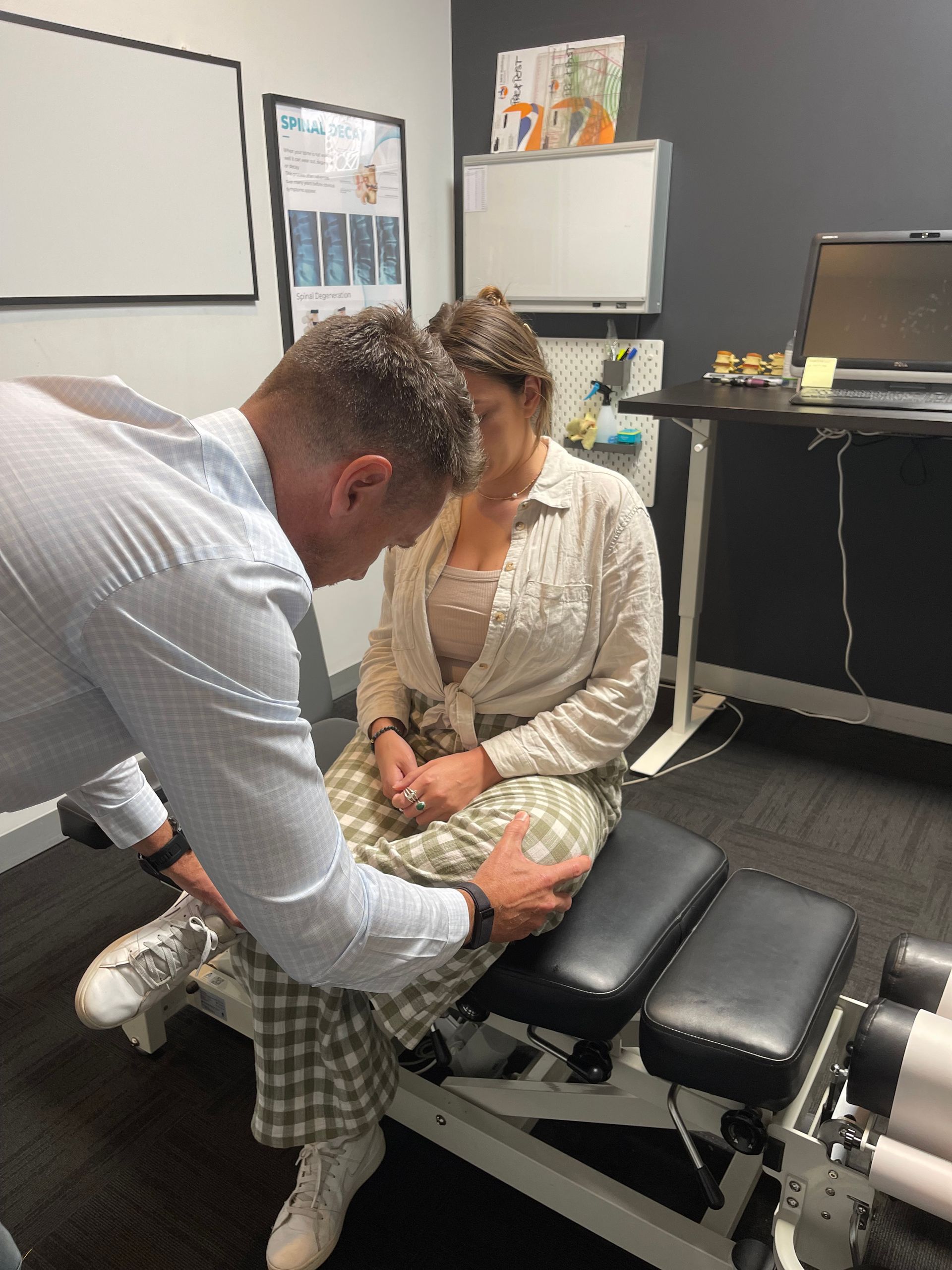
Chiropractic treatment offers a variety of custom options to relieve pain and improve health.
Chiropractic adjustments are one of the most common treatments for lower back pain. They realign the vertebrae and relieve nerve pressure. However, chiropractic treatment also includes spinal decompression, massage, and back muscle strengthening exercises.
Chiropractors use their hands or specialized tools to apply controlled force to specific areas of your spine to restore proper alignment and joint mobility. Unlike medications or surgeries, which may have risks and side effects, chiropractic care focuses on natural healing methods.
Chiropractic treatment for lower back pain takes a holistic approach to diagnosis and treatment, taking into account posture, lifestyle habits, and previous injuries. This can provide long-term relief from chronic back pain.
Chiropractic treatment can help relieve lower back pain by addressing both symptoms and underlying causes. From manual adjustments to complementary therapies like massage therapy or core strength exercises, there are many options.
Effectiveness Of Chiropractic Care
Chiropractic treatment options, such as spinal adjustments and therapeutic exercises and stretches, are often considered for lower back pain. However, how effective chiropractic care is depends on the individual and their situation.
A chiropractic adjustment applies controlled force to the spine's joints to restore proper alignment and relieve nerve pressure, reducing inflammation and improving mobility. However, not everyone experiences immediate relief.
Chiropractic care goes beyond temporary pain relief. By addressing musculoskeletal imbalances, chiropractors can improve spinal health and prevent future episodes of pain. They also advise lifestyle changes and exercises to help manage lower back pain.
Chiropractic care can relieve lower back pain for many people, but some people with certain medical conditions or injuries may need additional interventions or therapies for the best results. Consult a doctor before starting any new treatment.
Some people experience immediate relief after a chiropractic adjustment, while others find long-term benefits through regular treatments and lifestyle changes. The key is finding an approach that works best for you and your unique needs, so don't hesitate to explore different options within your own journey.
Final Thoughts
In conclusion, chiropractic care for lower back pain has been positive overall. While adjustments may worsen the pain, it's important to remember that everyone's response to treatment is different. Chiropractors assess and treat lower back pain, and their expertise in spine alignment can provide significant relief.
Chiropractic care improves overall health by boosting the body's natural healing abilities and nerve function. Regular adjustments can prevent future injuries and maintain spinal health, which is essential for a balanced and active lifestyle.
Research has shown that chiropractic care can relieve lower back pain. By using customized treatment options, chiropractors aim to treat the cause rather than just the symptoms.
Is lower back pain worse after chiropractic adjustment? Overall, chiropractic care can help manage lower back pain if you consult with a qualified chiropractor who understands your condition and creates a personalized treatment plan. Regular visits and self-care can improve spinal health and well-being.
Frequently Asked Questions
What Are The Potential Risks Or Complications Associated With Chiropractic Adjustments For Lower Back Pain?
Chiropractic adjustments for lower back pain can relieve many people, but there are risks and complications.
Adjustments may cause muscle soreness or stiffness, especially if the muscles were already tense or tight before the treatment. They may also increase pain due to the manipulation of sensitive areas or underlying issues.
However, these risks are usually minimal, and most people tolerate chiropractic adjustments well. Before starting treatment, consult with a qualified chiropractor to assess your situation and discuss any risks.
Can Chiropractic Adjustments Worsen Existing Conditions, Such As Herniated Discs, In The Lower Back?
While chiropractic care can benefit many people, it's important to remember that everyone's body is different and may respond differently to treatment.
In some cases, spine manipulation during an adjustment can strain already compromised areas, causing pain or discomfort. Consult a qualified chiropractor who can assess your condition and create a personalized treatment plan that takes into account pre-existing issues.
By doing so, you can reduce the risk of worsening your condition and safely relieve lower back pain.
Are There Any Specific Precautions Or Considerations To Keep In Mind Before Undergoing A Chiropractic Adjustment For Lower Back Pain?
Before getting a chiropractic adjustment for lower back pain, it's important to tell your chiropractor about any existing conditions or injuries, such as herniated discs, so they can tailor the adjustment techniques to your safety and effectiveness. Discuss any concerns or fears with your chiropractor before the adjustment to ease them.
Finally, after the adjustment, listen to your body and notice any changes or discomfort. If anything feels worse or you have questions, consult your chiropractor.
Consider these factors to make your lower back pain chiropractic adjustment safe and effective.
What's The Average Time Between Chiropractic Adjustments And Lower Back Pain Relief?
It usually takes a few days to feel better after a chiropractic adjustment, but it depends on the severity of the pain and the patient's response to treatment.
Remember that everyone's body is different, so what works for one may not work for another. However, chiropractic adjustments may provide significant relief and improve spinal health.
Always see a chiropractor who can diagnose your condition and make personalized recommendations.
How Long Does It Typically Take To Experience Relief From Lower Back Pain After A Chiropractic Adjustment?
There are several lower back pain treatments that may work better than chiropractic care.
A novel treatment is physical therapy, which strengthens and stretches spine-supporting muscles and improves flexibility. For pain relief and healing, acupuncture uses thin needles at specific points on the body. Massage therapy also relaxes tight muscles and increases blood flow.
Finally, cognitive behavioral therapy (CBT) may help chronic back pain sufferers address psychological causes. These alternative treatments for lower back pain may be more effective than chiropractic care.



